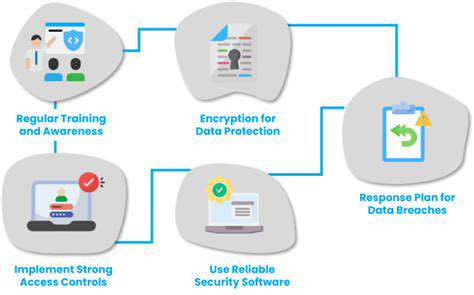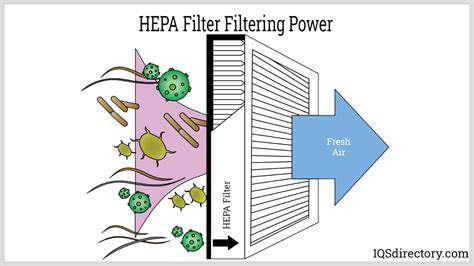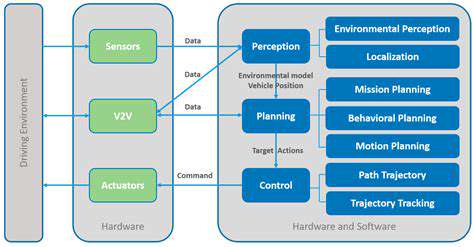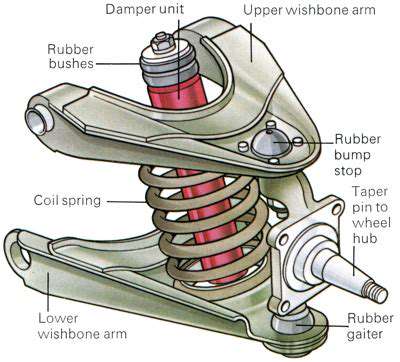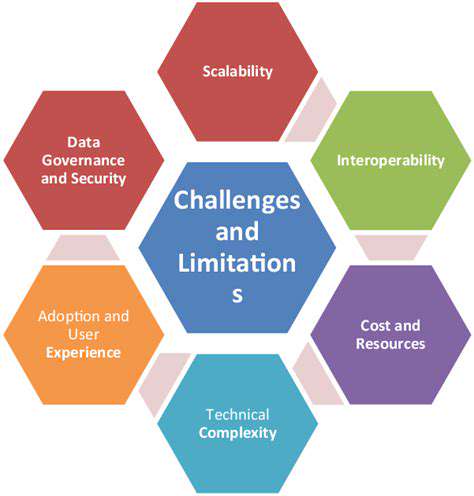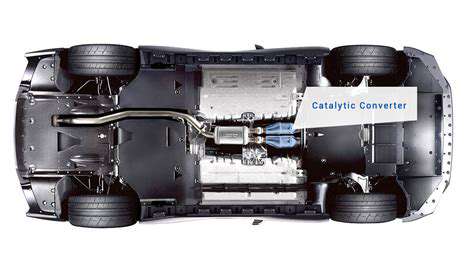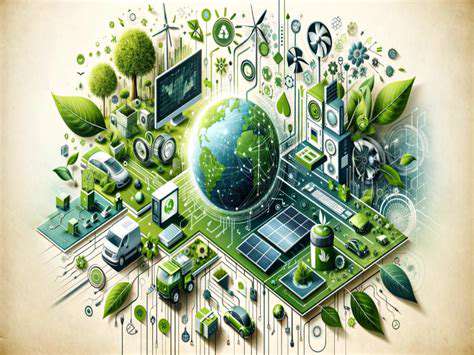LIDAR: Mapping the Physical World
LIDAR, or Light Detection and Ranging, is a crucial sensor for autonomous vehicles, providing detailed 3D maps of the surrounding environment. Employing laser pulses to measure the distance to objects, LIDAR excels at accurately determining the shape, size, and position of obstacles like pedestrians, vehicles, and road signs. This precise data is fundamental for creating a comprehensive understanding of the vehicle's surroundings, enabling safe and reliable navigation in complex scenarios.
The ability to perceive depth is a key advantage of LIDAR. Unlike cameras that only capture two-dimensional images, LIDAR generates point clouds, essentially a dense collection of 3D coordinates. These point clouds are essential for constructing detailed 3D models of the environment, which are vital for path planning, object recognition, and collision avoidance algorithms within autonomous driving systems.
Cameras: Capturing Visual Information
Cameras are arguably the most familiar sensory input for autonomous vehicles, playing a vital role in understanding the visual aspects of the environment. Their ability to capture images in color and high resolution is invaluable for identifying objects, recognizing traffic signals, and discerning lane markings. Advanced computer vision algorithms process these images, enabling the vehicle to understand the context of the scene, such as the relative positions of vehicles and the presence of pedestrians.
Beyond basic object recognition, cameras are crucial for tasks like recognizing traffic signs, enabling the vehicle to adhere to traffic regulations and respond appropriately. The constant stream of visual information from multiple cameras contributes to a holistic understanding of the scene, supporting more complex decision-making processes for autonomous driving.
Radar: Complementing the Sensory Landscape
Radar, or Radio Detection and Ranging, provides a complementary perspective to LIDAR and cameras, offering robust performance in challenging weather conditions. Radar operates by transmitting radio waves and measuring the time it takes for these waves to reflect back from objects. This allows radar to detect and track objects even in low-light conditions or heavy fog. This crucial capability ensures continuous monitoring of the environment, regardless of the weather.
Radar's strength lies in its ability to accurately measure the speed and range of objects, providing crucial information for collision avoidance and safe maneuvering. This data, combined with information from other sensors, enables the vehicle to make informed decisions about its trajectory and speed, enhancing the overall safety and reliability of autonomous driving.
Radar also contributes to the understanding of the motion of other vehicles, which is essential for maintaining safe following distances and reacting appropriately to sudden changes in traffic conditions.
Advanced Object Detection and Classification: Identifying the World Around
Object Detection Fundamentals
Object detection is a crucial aspect of computer vision, enabling machines to identify and locate objects within images or videos. This process involves not only recognizing the presence of an object but also pinpointing its precise location within the scene. Sophisticated algorithms are employed to analyze visual features, such as edges, shapes, and textures, to distinguish different objects from the background, facilitating accurate detection and localization. This fundamental understanding forms the cornerstone of various applications, from autonomous vehicles to medical imaging.
Different techniques exist for object detection, ranging from traditional methods like sliding windows and region proposals to the more modern deep learning approaches. These approaches leverage the power of convolutional neural networks (CNNs) to automatically learn hierarchical representations of visual data, enabling more robust and accurate object recognition.
Deep Learning Architectures for Object Detection
Deep learning has revolutionized object detection, enabling systems to achieve remarkably high accuracy. Convolutional neural networks (CNNs) form the backbone of most modern object detection systems, learning intricate patterns and features from vast datasets of labeled images. Various architectures, like Faster R-CNN, YOLO, and SSD, have emerged, each with specific strengths and weaknesses, influencing the choice of architecture for a particular application.
These architectures employ different strategies for object detection, some prioritizing speed, others accuracy. Understanding the trade-offs between speed and accuracy is critical in selecting the right architecture for the intended application.
Classification in the Context of Object Detection
Object classification, a critical component of object detection, involves assigning predefined categories to identified objects. For example, a system might classify a detected object as a car, person, or bicycle. Accurate classification relies on the system's ability to learn the distinguishing features associated with each class, and this process is often intertwined with the object detection task itself.
In many modern object detection systems, classification and localization occur simultaneously, with the network producing both a bounding box (location) and a probability distribution over possible object classes for each detected object.
Advanced Techniques and Applications
Beyond basic object detection, advanced techniques are constantly being developed to address more complex scenarios. These include techniques for detecting objects in challenging conditions, such as low-light or cluttered environments. The development of robust object detection models is crucial for ensuring reliable performance in diverse real-world applications.
Applications range from autonomous driving, where accurate object detection enables safe navigation, to medical imaging, where it aids in the identification and analysis of medical conditions. Furthermore, these techniques are increasingly used in surveillance systems and robotics, transforming how we interact with and utilize technology.
Performance Metrics and Evaluation
Evaluating the performance of object detection systems is critical for ensuring their effectiveness. Key metrics include precision, recall, and the Intersection over Union (IoU) score. Understanding these metrics allows for objective comparisons between different models and facilitates the development of more accurate and efficient systems.
These metrics provide a quantitative measure of the system's ability to accurately locate and classify objects, helping researchers and engineers to pinpoint areas for improvement and optimize their models for specific use cases. Thorough evaluation is essential for deploying these systems in real-world applications.
Future Directions and Challenges
The field of object detection and classification is constantly evolving, with ongoing research focused on improving accuracy, speed, and robustness. Challenges include handling diverse object appearances, dealing with occlusions, and adapting to variations in lighting and background conditions.
Future research may involve exploring new deep learning architectures, developing more efficient algorithms, and incorporating techniques for enhanced robustness and adaptability to challenging real-world scenarios. These advancements promise to further improve the accuracy and reliability of object detection systems, expanding their applications in various fields.
Environmental Adaptation: Navigating Diverse Conditions

Evolutionary Pressures Shaping Adaptation
Environmental changes, whether gradual or abrupt, exert significant selective pressures on organisms. These pressures drive evolutionary adaptations, favoring traits that enhance survival and reproduction in the given environment. Organisms that possess advantageous traits are more likely to thrive and pass those traits to their offspring, leading to the gradual evolution of populations better suited to their surroundings. This process, often spanning vast stretches of time, is a testament to the remarkable plasticity of life.
The interplay between organisms and their environment is a constant, dynamic process. Species are constantly responding to changes in temperature, precipitation, resource availability, and the presence of predators or competitors. These responses, while sometimes subtle, are ultimately responsible for the diversity of life we observe today.
Physiological Adaptations
Physiological adaptations represent changes in the internal workings of an organism. These adaptations can involve adjustments in metabolism, hormone production, or the efficiency of organ systems. For example, some animals have evolved specialized kidneys that allow them to survive in environments with limited water availability.
These internal adjustments are often crucial for survival in extreme conditions. The remarkable capacity for physiological adaptation highlights the intricate mechanisms that regulate life processes, allowing organisms to cope with challenging environments.
Behavioral Adaptations
Behavioral adaptations encompass changes in how organisms interact with their environment. These can range from migration patterns to foraging strategies, communication methods, and predator avoidance techniques. For instance, certain species have developed complex social structures that enhance their ability to locate food or defend against threats.
Behavioral adaptations are often crucial for survival, providing a flexible response to environmental changes. The flexibility of behavior allows organisms to adjust to shifting conditions more rapidly than purely physiological adaptations might allow.
Adaptations to Temperature Fluctuations
Temperature plays a critical role in determining the distribution and abundance of species. Organisms have developed various mechanisms to cope with fluctuations in temperature, from physiological adjustments to behavioral strategies. For instance, some animals hibernate during cold periods, allowing their bodies to conserve energy and withstand freezing temperatures.
Other organisms have developed specialized coats or insulation to maintain body temperature in cold environments. These adaptations highlight the remarkable diversity of strategies employed by life forms to thrive in diverse climates.
Adaptations to Water Availability
Water availability is a fundamental factor influencing the distribution and success of species. Organisms inhabiting arid environments have evolved numerous adaptations to conserve water, such as specialized kidneys, waxy coatings on leaves, and efficient water-absorbing roots. These adaptations are essential for survival in water-scarce environments.
Conversely, organisms in aquatic environments have evolved mechanisms to maintain internal water balance in the face of abundant water availability.
Adaptations to Food Availability
The availability of food resources significantly impacts the survival and reproduction of organisms. Species have evolved diverse foraging strategies and digestive systems tailored to their specific food sources. For example, herbivores have developed specialized digestive systems for processing plant material.
Predators, in turn, have developed strategies for locating and capturing prey. The relationship between food availability and adaptation is a key component in shaping ecological communities.
Adaptations to Predation Pressure
Predation pressure is a powerful selective force shaping the evolution of prey species. Organisms have developed a variety of adaptations to avoid predation, including camouflage, speed, defensive weaponry, and alarm systems. For example, many animals have evolved cryptic coloration that allows them to blend into their surroundings, making them less visible to predators.
Other adaptations include the development of sharp claws, powerful jaws, or venomous toxins for defense. These adaptations demonstrate the crucial role of predation in driving evolutionary change.
